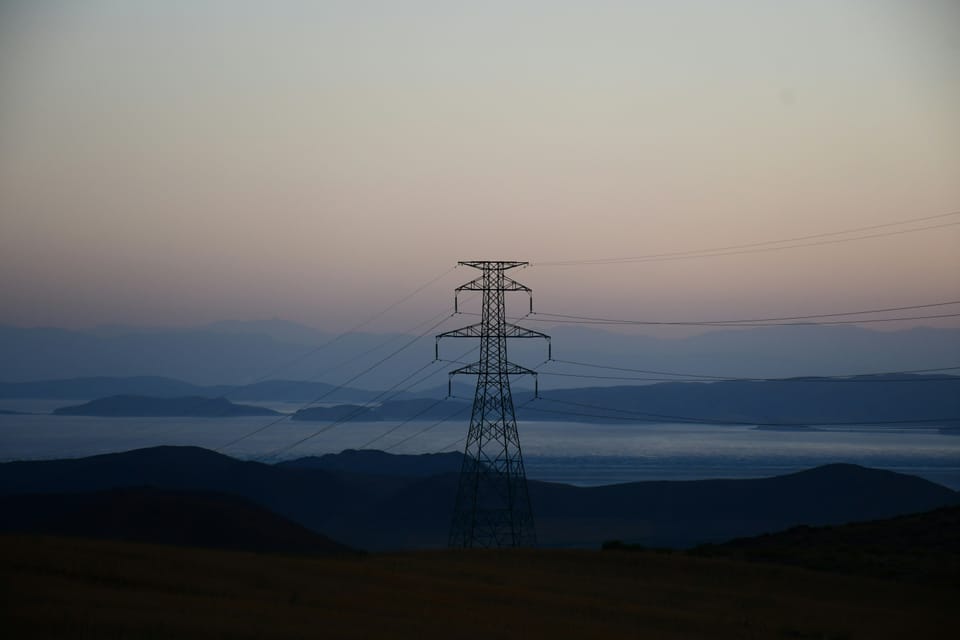Decarbonising energy supply: Governance pathways and best practices

Renewable energy is now cheaper than fossil fuels in much of the world, but implementing an energy decarbonisation strategy across a complex organisation still presents challenges. Sustainability directors from three different companies share how internal targets, training and decentralised decision-making has helped them achieve their energy goals.
With global electricity demand set to double in the next 25 years, energy decarbonisation is the cornerstone of our transition to net zero. For companies – which are expected to represent three quarters of the growth in demand – decarbonising energy requires making long-term investment decisions at a time of rapid technological and policy development.
“We are an electro-intensive business, so energy and our Scope 2 emissions are really important for us,” Lee Adcock, Sustainability Director at piping manufacturer Genuit Group, explained at a recent CSO Futures webinar. The company has science-based targets to cut Scope 1 and 2 emissions by 30% by 2027, and emissions across all scopes by 90% by 2050.
To support these goals, Genuit also has a target of sourcing 100% renewable electricity by 2030. But with 20+ sites ranging from very small units to large manufacturing hubs, achieving these targets “is not all plain sailing”, Adcock warned.
The power of periodic internal reporting
One of the initiatives that has helped the company achieve a 70% reduction in Scope 1 and 2 emissions is reporting – both externally and internally.
“One of the challenges we have is we've got lots of different businesses and sites, so one of the things we focused on is having site and business-wide internal targets so that business units and individual sites can see how they are performing.
“And then we've also added in periodic reporting. Lots of businesses probably report greenhouse gases and different sustainability metrics annually, but we've gone to doing monthly and quarterly internal reporting, because by the time you produce annual numbers it's too late to go back and do anything about them. So, having that monthly and quarterly reporting really helps the sites keep on top of what they're doing and take corrective action if things are going a bit off track,” Genuit’s Sustainability Director added.
The strategy is helping the group position itself as a low-carbon supplier, helping it win new business and increasing investor confidence in its resilience.
Training and empowering local teams
Crown Worldwide Group is a privately owned specialty logistics company with offices and operations over 40 countries globally – so for Head of ESG Joy Lam, decarbonising the firm’s energy supply hinges on empowering local teams to make the right energy decisions.
“Internally, we've got 40 carbon champions representing different regions and countries that we operate in. We've got various working teams ensuring that we've got the right people, and we are looking at the right data in a very centralised manner. Collecting the information has been quite a journey for us, but from there we will be able to develop reduction strategies through various approaches as available and applicable in different business operations and different geographies,” she explained during the webinar.
To implement these strategies, Crown is focusing on education and empowerment, with 130 colleagues certified ‘carbon literate’ after taking training courses developed in-house. In addition, the company has invested in a greenhouse gas data platform that allows local sites to visualise their performance.
“People within the organisation can make or break any commitments that we might have. So it's important for us to build [these commitments] into the business case, with the incentivisation of some of the country managers and that sort of carrot and stick approach. There has to be ownership, and the ownership has to be enforced, and that's how we are able to move things forwards.
“Otherwise, if I say ‘let's do a PPA or on-site renewables’, it's not going to go down very well because they didn't make that choice,” Lam added.
Energy decarbonisation hierarchy
For a FTSE100 manufacturing firm like Smiths Group, energy decarbonisation is the most important lever to net zero – and decisions are made following a hierarchy.
“We are looking to reduce the amount of energy that we consume in the first instance, be that from heating, lighting, equipment use, or EVs. We then look to prioritise on-site generation wherever possible, since we don't own all the buildings. And then we move on to PPAs, which is actually our next focus area for the future. We're currently around the mid-seventies in terms of renewable energy, and we hope to get to 100% with PPAs in the very near future,” explained Ben MacDonald, Vice President of ESG, Sustainability and Indirect Procurement at Smiths Group.
He highlighted the “sentiment” that drives these different metrics: “Obviously one of the easiest things to do is to buy an unbundled REC from the marketplace at a relatively low cost, but there's always a question of whether or not it's really additive. And therefore my view, and also the Board's view, is that you should try and do things that are generally part of the transition.”
“If you look at PPAs, those are 15 to 20-year commitments, so for a lot of businesses out there, it’s certainly a big commitment and a big ask to really think that far ahead. So on-site generation is actually preferred, and for good reason. So I think we've managed to secure good payback, anywhere between three and four years. And there's co-benefits on it as well: it really is a demonstration to not just employees, but other stakeholders and customers that you're actually serious,” MacDonald added.
Other panellists also pointed to on-site generation as a way to secure energy supply at a time of increasingly constrained grid availability – an argument that stood out in a recent EY survey of business leaders.
Pay incentives for the win
Asked about the single most impactful decision their companies made on the way to energy decarbonisation, the panellists all pointed to the inclusion of energy efficiency and greenhouse gas reduction targets in incentive schemes – a lever already singled out as the most effective by CDP data.
“A couple of years ago we had corporate external targets, but people were a bit confused about what that meant to them, how they could influence it. And then, as soon as we broke that down in terms of their own operations, their own site, and then also put that link into remuneration, that really unlocked a lot of mobilisation in people who were previously a bit quiet,” said Adcock.
For MacDonald at Smiths Group, incentives are “absolutely pivotal”. “The most important thing to recognise is that there are completely different belief systems from people around the world, from very strong engagement to a high level of apathy and then right through to absolutely strong denial. And what annual incentive plans and long-term incentive plans do is transcend those beliefs: you don't have to believe it, but you believe in your bonus,” he said.







Member discussion